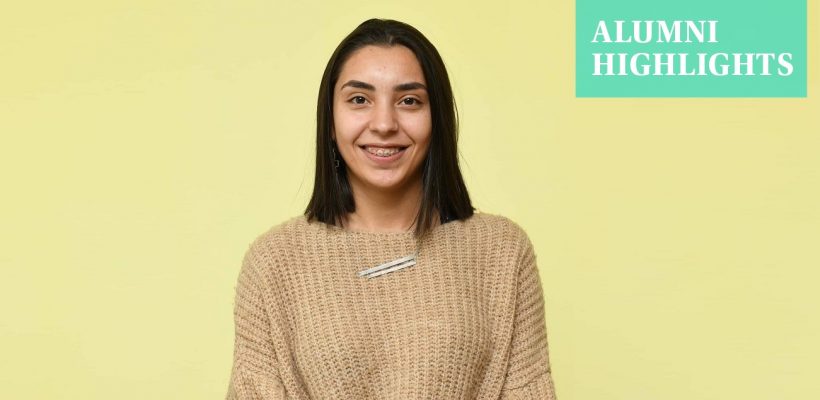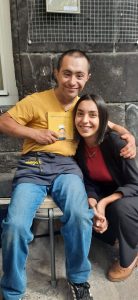
Gayane Aghabalyan (BAEC ‘20): Promoting Inclusion Through Children’s Literature
4 min readGayane Aghabalyan (BAEC ‘20) is the author of the “Sunny Cook” children’s books published in September 2021. She also has co-authored the “Armenian Wonderwomen” to be published soon. Currently, Gayane is a teaching associate for the Learning, Activism, and Social Movements, as well as the Gender and Social Change courses taught at the American University of Armenia (AUA) by Dr. Hourig Attarian. Inspired by real-life stories, Gayane aims to use her writing to change perspectives and break stereotypes among the youngest audiences.
You have authored and co-authored the books “The Sunny Cook” and “Armenian Wonderwomen.” Tell us about the incentives behind writing each of them. What message did you want to convey?
The idea of “Armenian Wonderwomen” started earlier, in 2019, but we started working on it in 2020. It is a collaborative project with Gayane Ghazaryan (BAEC ‘20), Elmira Ayvazyan (BAB ‘20), and Lili Avetyan from Yerevan State University. We were quite frustrated with the fact that there is close to no representation of women in Armenian textbooks, including children’s books. Inspired by the children’s book series “Good Night Stories for Rebel Girls” written by Elena Favilli and Francesca Cavallo, we decided to follow in their footsteps and create a book featuring historical as well as contemporary Armenian women who inspire us.
As for “Sunny Cook,” it was the final project for my Children’s Literature course at AUA. We had the creative freedom to pick a topic and choose the age group we wanted to cover. I was brainstorming about topics with Mimi Zarookian, the course instructor. The initial idea was to work on the “Armenian Wonderwomen,” which was already in the process, but another idea soon came to me.
There is a bakery in Gyumri called Aregak, which is an inclusive cafe that employs people with disabilities. During one of my visits, I picked up a brochure about the bakery and read an interview with the protagonist of my story, Hovhannes, and his mother. I learned about the difficulties they had to overcome after the earthquake and the challenges they faced socially and in educational settings. People didn’t understand who he was and why he looked different from them. Hovhannes faced many hardships, which however had a happy ending when he found his passion for cooking and got employed at the Aregak Bakery.
His story truly inspired me and I wanted to write about him. It’s a book about differences, discrimination, dream, hope, and inclusion. The latter is particularly important as we have a lack of representation and inclusion in children’s literature both in Armenia and worldwide.
How did you make the topic of inclusion suitable for younger audiences?
I instantly visualized the story in my mind. There was never a question on how I could make this story suitable for younger audiences. Having taken the Children’s Literature course, I was familiar with the nuances of writing a children’s book; I had the format and guidelines in mind. I wanted this story to reach the youngest children starting from two to three years of age. I think these types of stories should be read at a young age to prevent the formation of stereotypes in the future. As children grow up, they might meet people who are different from them and they can make a connection with the story they’ve read. I believe this to be true, so I made the story as simple as possible. On the last page of the book, I included a glossary, which gives a short explanation of Down syndrome in very simple language. The visuals had to be very clear to help make the connection. It worked out great, thanks to the book’s illustrator Lusine Sahakyan.
When was the book published? Is it available in both Armenian and English?
The book launch was in September 2021. We worked with the ARI literary agency and Edge publishing. The book was originally written in English. The current published version is in Eastern Armenian, but we hope to have the Western Armenian version soon as well.
What inspires you to write? Where did that passion come from?
My passion for writing comes from the personal stories of people. I don’t think I’d be able to write fiction — my brain doesn’t work that way. I have to get inspired from real-life stories. I think that the stories people tell have a transformative effect. They have the power to make a difference by creating a connection between us.
How has your AUA education helped you in finding your writing style?
The courses at AUA and the support of the instructors have definitely made an impact on me. It is not so much about the knowledge, but rather about the network and experience you get at AUA. I had a chance to work with Mimi Zarookian, Dr. Hourig Attarian, Dr. Melissa Bilal, and Suzanne Daghlian, amazing faculty members who were and continue to be my advisors throughout this process. It is empowering to realize you can create something, and AUA gives you the space and network to do so.
You have been a teaching associate at AUA for a while now. How would you describe that experience?
This is my fourth semester as a teaching associate working with Dr. Hourig Attarian in the Learning, Activism, and Social Movements, as well as the Gender and Social Change courses. Going through online education and switching back to campus has been a difficult journey. It has been a challenging educational experience for me as well. Working with Dr. Hourig Attarian is an amazing experience.

